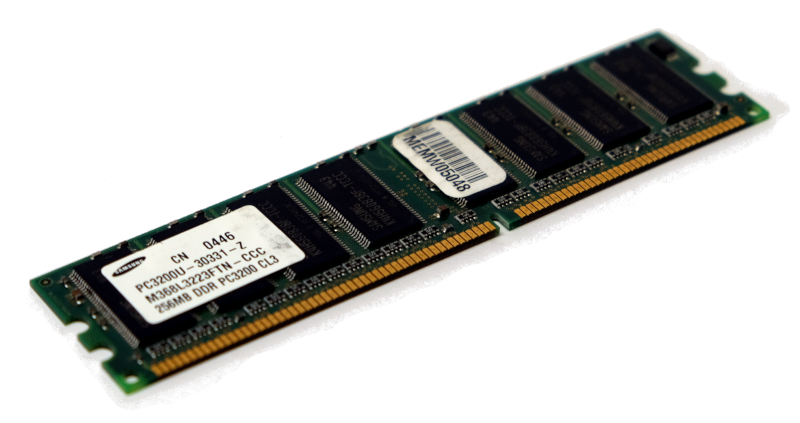Random Access Memory (“RAM”) is an integral part of a computer. In fact, your computer will not boot up if the RAM is missing, incorrectly seated on the motherboard, or damaged. RAM temporarily stores all data before and after processing by the CPU. For this reason, the RAM and CPU are always situated very close together on the motherboard.
In this post:
Required knowledge:
1. Function
Together, the RAM and CPU account for the Processing component of the Information Processing Cycle.


RAM is referred to as (system) “memory”. It stores data & machine code currently being used by the CPU. RAM is said to be volatile as its contents are lost should its power supply be interrupted (due to a power failure for example). When we say we are saving work, we are describing the process of moving data that is temporarily stored in RAM to permanent storage on a storage device such as an HDD.
2. Form
The RAM modules slot into special, keyed memory slots on the motherboard. Power is supplied to the motherboard by the PSU which in turn supplies electricity (in the region of 1.5V DC) to the RAM modules.

3. Specifications
- The capacity (the total volume of data that can be stored)
- Measured in bytes, most commonly now Gigabytes (GB)
- Read and write speed (the speed at which data can be read from the RAM or written to the RAM)
- Measured in Hertz, most commonly Megahertz (MHz) or Gigahertz (GHz)
- The form (physical shape) of the RAM
- SIMM
- DIMM
4. Other types of RAM
RAM exists in other forms and locations:
- CPU cache (e.g., L1, L2, L3)
- Hard drive buffer/cache
- Digital-to-Analogue Converters (“DACs”) on video cards
